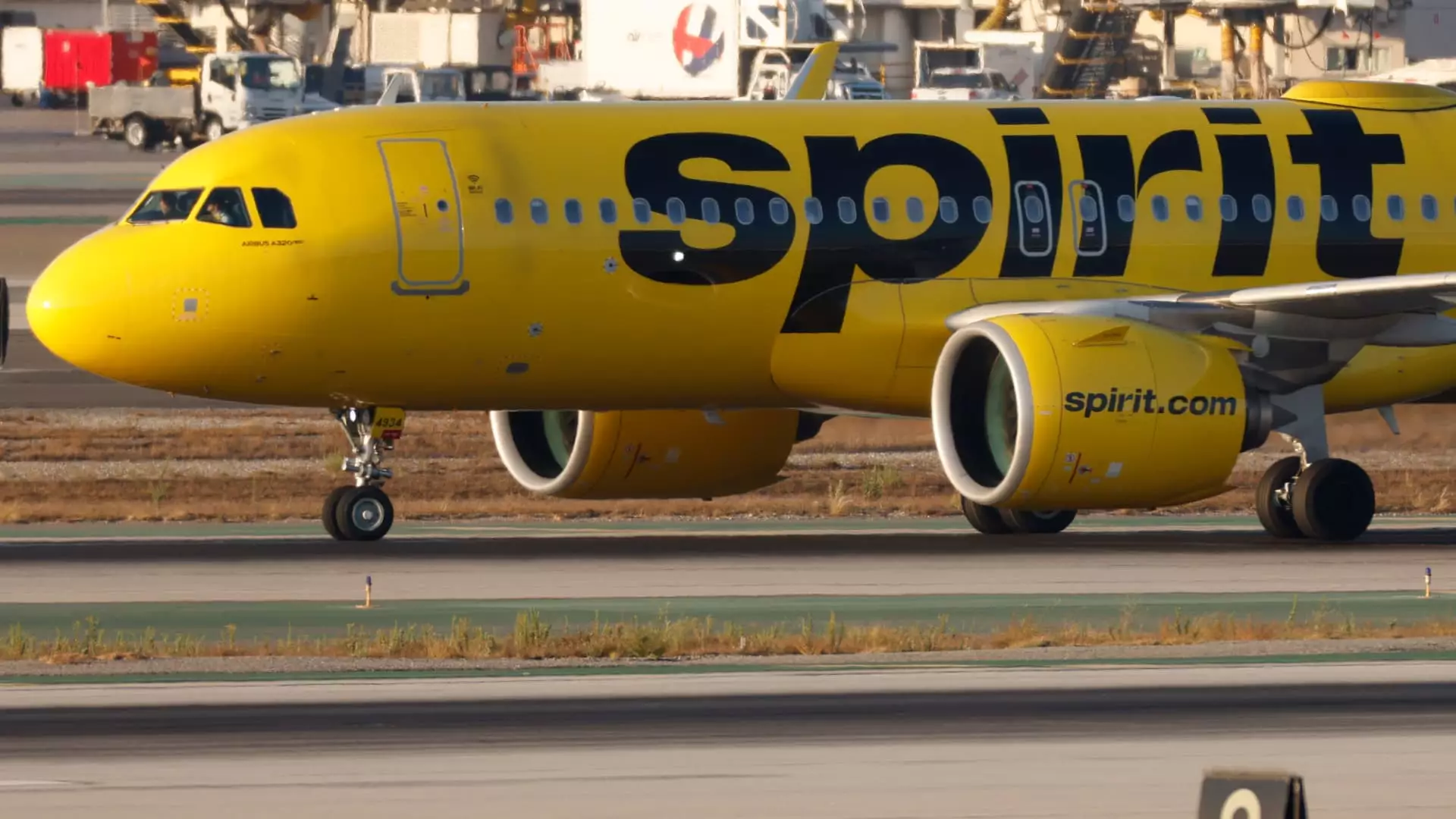Spirit Airlines, once a pillar of budget air travel, has succumbed to the pressures of the modern airline market, filing for Chapter 11 bankruptcy protection after a series of operational setbacks and strategic blunders. This marks a significant moment for the airline industry as Spirit becomes the first major U.S. carrier to fall into bankruptcy since American Airlines more than a decade ago. The airline’s struggle highlights the evolving landscape of consumer preferences and the financial strains that legacy debt and operational challenges can impose on even the most prominent players in the market.
The company has stated that it has arranged a prepackaged bankruptcy deal with its bondholders, which includes $300 million in debtor-in-possession (DIP) financing aimed at ensuring continued operations during this turbulent time. With plans to emerge from bankruptcy by the first quarter of the following year, Spirit maintains that flights will remain operational, and customers will be able to book tickets as usual. Ted Christie, the CEO, assured patrons that loyalty points and existing tickets would still be honored—a carefully crafted message designed to preserve customer confidence.
The roots of Spirit’s distress run deep. Various factors have converged to create the perfect storm: a costly engine recall, rising operational expenses exacerbated by the pandemic, and the failure to secure a merger with JetBlue Airways—an acquisition that sought to bolster Spirit’s competitive edge but was blocked for antitrust concerns. This misalignment of strategic opportunities put the airline in a precarious financial position. Over the past year, Spirit’s stock has plummeted by more than 90%, rendering it one of the most notable victims of market volatility and shifting consumer demand.
The airline has grappled with mounting debts and financial obligations, including renegotiating $1.1 billion in loyalty bonds—an issue that strained its relationship with credit card processors. Ultimately, the company’s inability to stabilize its finances culminated in its bankruptcy filing with the Southern District of New York, leading to its imminent delisting from the New York Stock Exchange. This downfall was accentuated by a drastic decline in revenue, with recent reports indicating a $61 million drop in sales compared to the previous year as costs surged and ticket fares dwindled.
With the airline facing deep financial fractures, the outlook is grim. Spirit has announced further workforce reductions, with plans to furlough an additional 330 pilots in January, following the previous layoff of 200 pilots in September. To combat its debt crisis, the airline has already liquidated several aircraft—selling 23 Airbus planes to generate over $500 million—indicating that it is drawing on immediate cash reserves to stay afloat.
Even as Spirit attempts to maintain a facade of operational normalcy amid bankruptcy proceedings, industry analysts project that the airline will need to contract its route network and fleet more dramatically to get its costs under control. The budget business model, premised on ultra-low fares with additional fees for services, had previously allowed Spirit to expand aggressively. However, shifts in consumer behavior post-pandemic—where travelers increasingly favor holistic and flexible fare packages—have left Spirit struggling to adapt.
The Evolving Competitive Landscape
What makes Spirit’s situation more unsettling is the ripple effect that its bankruptcy could have on the broader airline market. Spirit’s success in providing low-cost travel options inspired a slew of similar offerings from major airlines like Delta, American, and United, each of which launched their own basic economy fares in a bid to capture a segment of the bargain-hunting traveler demographic. However, the increasing complexity of the competitive environment, punctuated by external macroeconomic pressures and post-pandemic adjustments, has posed significant challenges.
In response to these shifts, Spirit has started offering bundled fares and additional cabin options—a pivot that mirrors trends in consumer expectations for greater comfort and inclusivity. Yet, this strategy may prove too little, too late, as competitors continue to evolve and refine their offerings.
The predicament facing Spirit Airlines serves as a stark reminder that even market leaders can falter under the weight of financial mismanagement and evolving consumer expectations. While the airline strives to maintain its identity as an affordable travel option, the path towards recovery will require not only the resilience to adapt but also a careful reevaluation of its business strategies in alignment with current market conditions.
As the airline navigates this chapter in its history, it is evident that the landscape of air travel will continue to shift, and the lessons from Spirit’s journey may resonate across the industry. The future remains uncertain, but there is a collective hope among loyal customers and aviation analysts alike that Spirit can emerge not just intact, but revitalized in an increasingly competitive arena.

